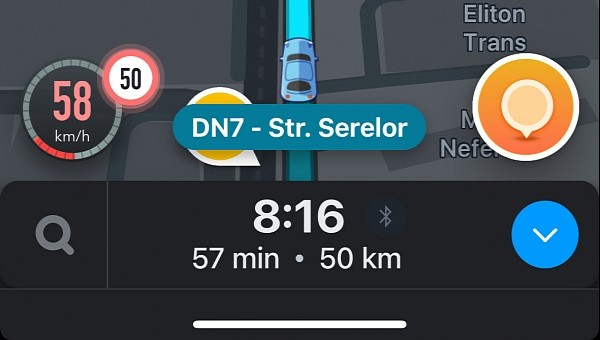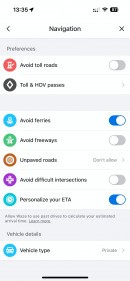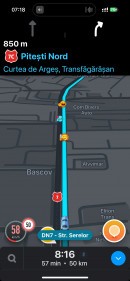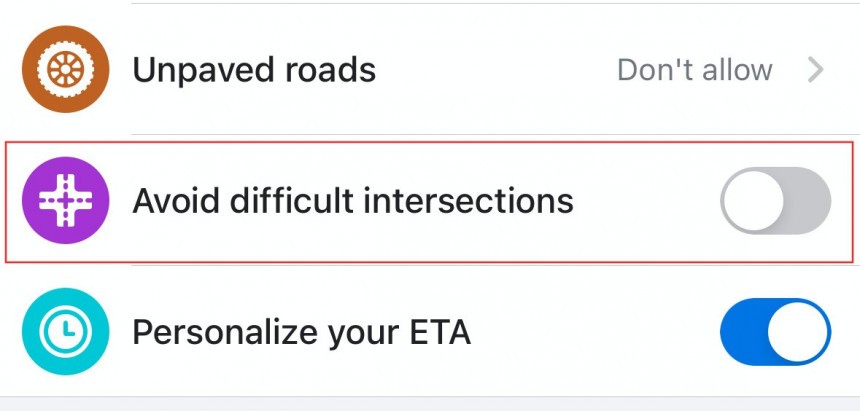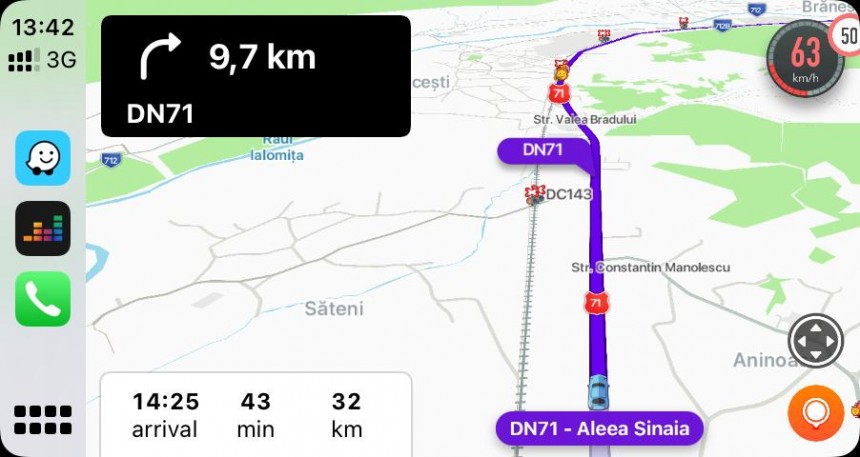One of the main benefits of using navigation apps while driving is that all these software solutions make the road more predictable.
In other words, they help drivers be in the know about what’s happening on the road ahead, and in the case of crowdsourcing solutions, the whole thing works in a brilliant way.
Waze is just the best example in this regard.
Also owned by Google (just like Google Maps), Waze relies on its community to provide users with state-of-the-art navigation. And thanks to the reports sent by other drivers on the road, each and every one of us knows in advance what’s happening out there before reaching the location where a certain incident was flagged.
This is why these solutions come in so handy, and this is also the reason more companies are trying to integrate a crowdsourcing component into their software. Apple has already brought Waze-inspired incident reporting in Apple Maps, with Sygic also doing the same with a feature known as wrong-way driver warnings.
In the meantime, Waze is the one pioneering this push, eventually serving as one of the best Google Maps alternatives currently on the market.
There’s a feature, however, that Google Maps, Apple Maps, and all the other navigation apps out there should copy as soon as possible. The reason is as simple as it could be: it makes every single drive less stressful.
Its name is “avoid difficult intersections.”
Launched in 2016 in Los Angeles, the purpose of the feature is pretty self-explanatory, so even if you’re not familiar with Waze, you should be able to figure out what it does in a matter of seconds.
Basically, to provide users with a less stressful drive, this feature analyzes your route and tries to determine if you’re going through any difficult intersections on the way to your destination. While the concept of “difficult intersections” can be quite subjective, Waze has tried to narrow the whole thing down to left turns that drivers would have to make onto a busy road or intersections without traffic lights.
In other words, if your route involves coming from a side street and making a left turn across multiple lines, there’s a good chance that Waze marks this point as a difficult intersection. As such, when the aforementioned setting is enabled, Waze should try to look for a way to avoid this location, in essence searching for intersections with traffic lights or a route where you’d just have to make a safer right turn.
It's not difficult to figure out the number one shortcoming of this option: the route could eventually be substantially longer, so you may end up spending more time in traffic. But given not everybody wants a stressful drive, this may not bother drivers who don’t want to deal with any hard turns.
Also, the “avoid difficult intersections” setting doesn’t come with any other configuration options. This means that Waze can’t make a difference when you drive during the night, for instance, when the traffic is much lighter, and those difficult intersections aren’t such a big concern anymore.
Leaving this setting activated could therefore affect the routing model of Waze no matter when or where you drive, so if you always want a personalized drive, just make sure you enable the toggle before starting the navigation.
But at the end of the day, there’s no doubt this is a great addition for a less confident driver who just wants to arrive at their destinations safer and more conveniently, not necessarily faster.
As I said, this is the kind of feature that should make its way to all navigation apps, and without a doubt, Google Maps is the one that should copy it as soon as possible. As the world’s number one mobile navigation app, Google Maps is also looking for the fastest route to a user-defined destination, and as a result, drivers are therefore sent through all kinds of intersections, even though this could involve getting through a small gap of crossing traffic at just the right time.
Not everybody has the confidence to make such a quick decision though, and given the navigation apps are supposed to make the traffic safer overall, this kind of update would really make sense not just in Waze but also in the rest of the other navigation apps.
But what needs to be further refined is how the industry flags complex navigations. For some drivers, a complex intersection could be one where no traffic lights exist, while for others, simply making a left turn between crossing traffic is a total nightmare.
This is where the crowdsourcing engine could help as well, as Waze should turn to the power of the community to help mark these locations, while also taking into account factors such as the existence of traffic lights, the number of lanes, and the slowdowns that occur before entering the intersection.
Waze is just the best example in this regard.
Also owned by Google (just like Google Maps), Waze relies on its community to provide users with state-of-the-art navigation. And thanks to the reports sent by other drivers on the road, each and every one of us knows in advance what’s happening out there before reaching the location where a certain incident was flagged.
This is why these solutions come in so handy, and this is also the reason more companies are trying to integrate a crowdsourcing component into their software. Apple has already brought Waze-inspired incident reporting in Apple Maps, with Sygic also doing the same with a feature known as wrong-way driver warnings.
In the meantime, Waze is the one pioneering this push, eventually serving as one of the best Google Maps alternatives currently on the market.
There’s a feature, however, that Google Maps, Apple Maps, and all the other navigation apps out there should copy as soon as possible. The reason is as simple as it could be: it makes every single drive less stressful.
Its name is “avoid difficult intersections.”
Basically, to provide users with a less stressful drive, this feature analyzes your route and tries to determine if you’re going through any difficult intersections on the way to your destination. While the concept of “difficult intersections” can be quite subjective, Waze has tried to narrow the whole thing down to left turns that drivers would have to make onto a busy road or intersections without traffic lights.
In other words, if your route involves coming from a side street and making a left turn across multiple lines, there’s a good chance that Waze marks this point as a difficult intersection. As such, when the aforementioned setting is enabled, Waze should try to look for a way to avoid this location, in essence searching for intersections with traffic lights or a route where you’d just have to make a safer right turn.
It's not difficult to figure out the number one shortcoming of this option: the route could eventually be substantially longer, so you may end up spending more time in traffic. But given not everybody wants a stressful drive, this may not bother drivers who don’t want to deal with any hard turns.
Also, the “avoid difficult intersections” setting doesn’t come with any other configuration options. This means that Waze can’t make a difference when you drive during the night, for instance, when the traffic is much lighter, and those difficult intersections aren’t such a big concern anymore.
Leaving this setting activated could therefore affect the routing model of Waze no matter when or where you drive, so if you always want a personalized drive, just make sure you enable the toggle before starting the navigation.
But at the end of the day, there’s no doubt this is a great addition for a less confident driver who just wants to arrive at their destinations safer and more conveniently, not necessarily faster.
As I said, this is the kind of feature that should make its way to all navigation apps, and without a doubt, Google Maps is the one that should copy it as soon as possible. As the world’s number one mobile navigation app, Google Maps is also looking for the fastest route to a user-defined destination, and as a result, drivers are therefore sent through all kinds of intersections, even though this could involve getting through a small gap of crossing traffic at just the right time.
But what needs to be further refined is how the industry flags complex navigations. For some drivers, a complex intersection could be one where no traffic lights exist, while for others, simply making a left turn between crossing traffic is a total nightmare.
This is where the crowdsourcing engine could help as well, as Waze should turn to the power of the community to help mark these locations, while also taking into account factors such as the existence of traffic lights, the number of lanes, and the slowdowns that occur before entering the intersection.
